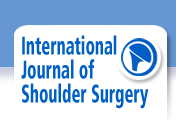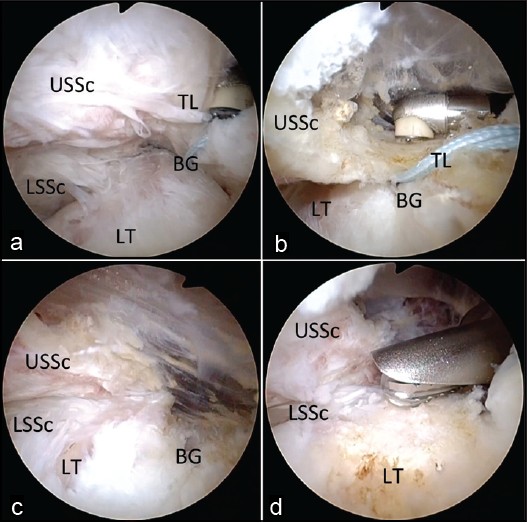
Figure 3: Arthroscopic view of a right shoulder through a posterior glenohumeral portal demonstrating the lateral release. (a) The lateral border of the upper subscapularis is defined by releasing the lateral extension of the transverse ligament. The release begins at the upper border of the subscapularis. (b) The release continues inferiorly separating the transverse ligament from the upper subscapularis and exposing the bicipital groove. (c) The completed release exposes the bicipital groove completely and the distal deep intact lower subscapularis. (d) With the lateral release completed, the entire upper lesser tuberosity may now be accessed with ease for eventual repair. (BG, bicipital groove; LT, lesser tuberosity; USSc, upper subscapularis; LSSc, lower subscapularis; TL, transverse ligament)
